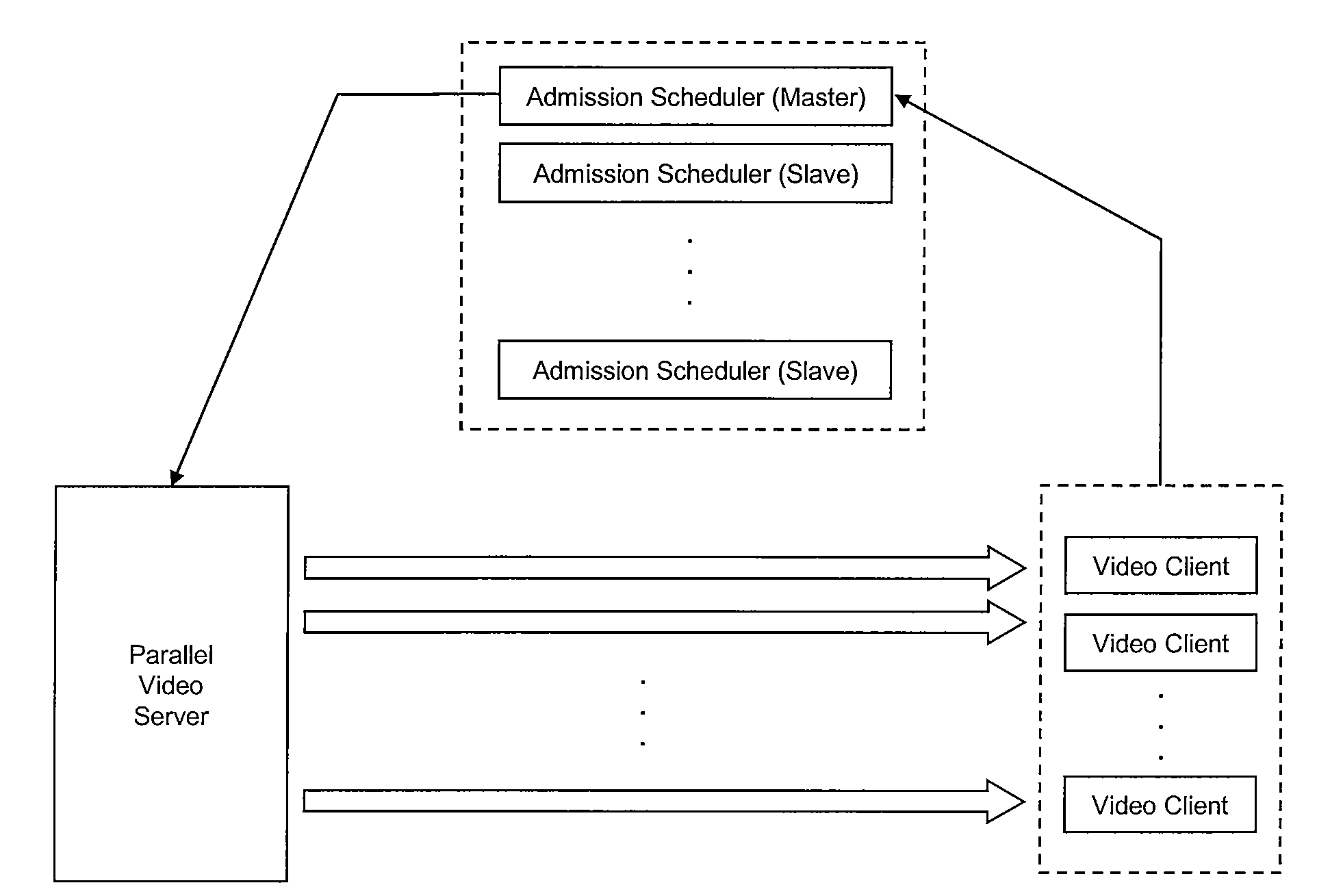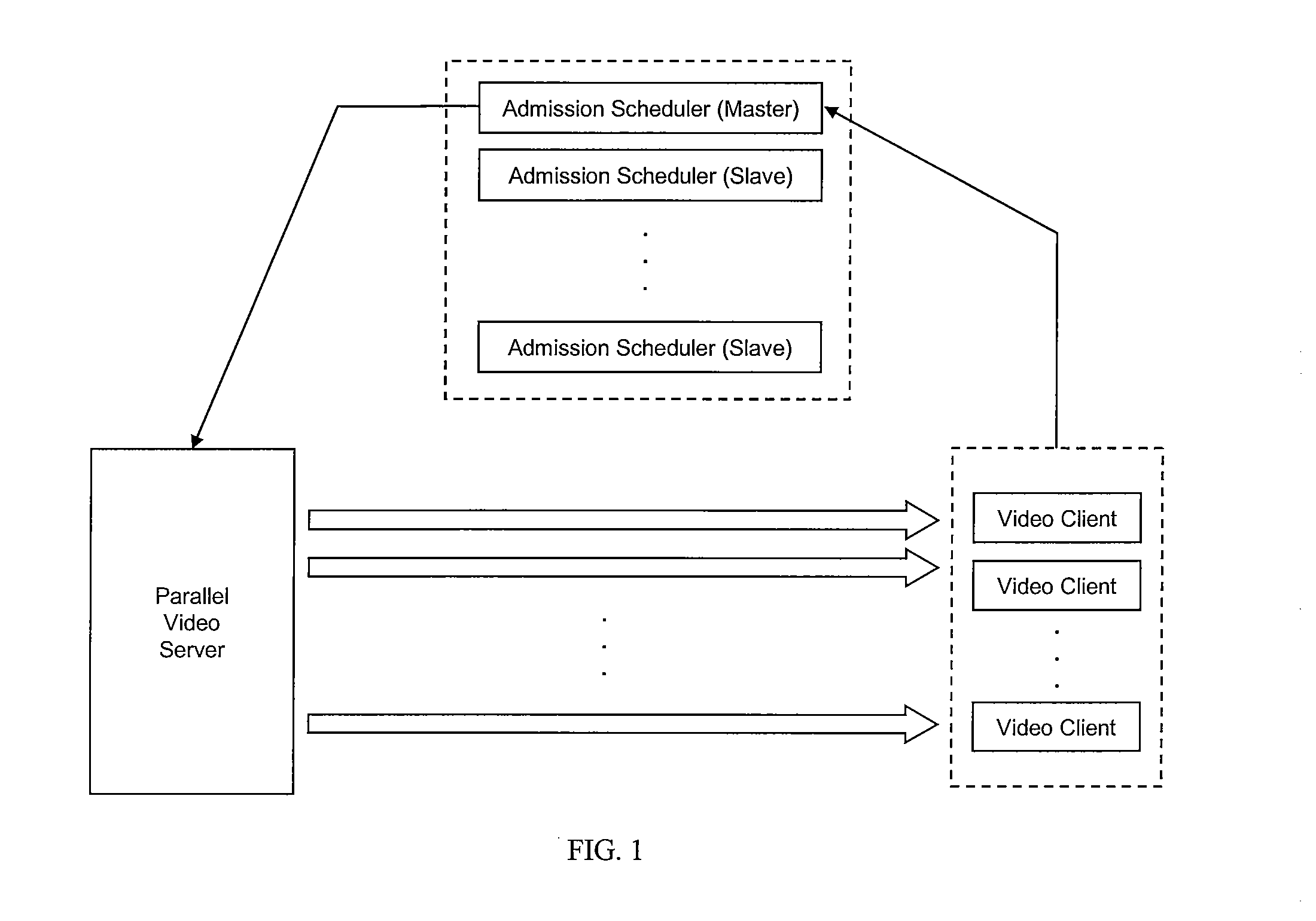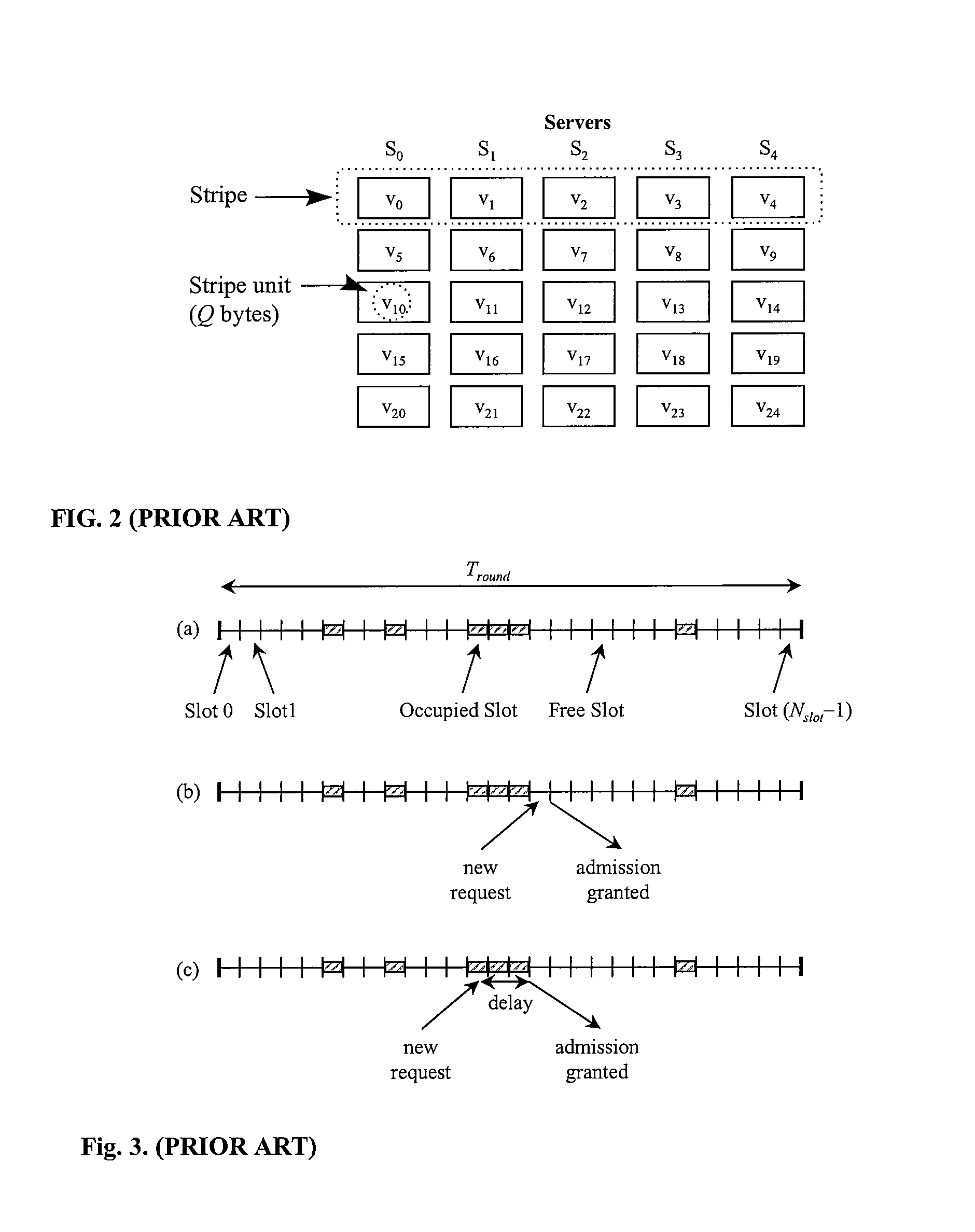Load balancing and admission scheduling in pull-based parallel video servers
a video server and load balancing technology, applied in the field of video data server technology, can solve the problems of video server video on demand system, video playback interruption at the client, server performance degradation, etc., and achieve the effect of improving video data throughpu
- Summary
- Abstract
- Description
- Claims
- Application Information
AI Technical Summary
Benefits of technology
Problems solved by technology
Method used
Image
Examples
Embodiment Construction
[0040]FIG. 1 is a block diagram of a Video on Demand system 10 according to the invention and operative according to the method of the invention and illustrating a replicated admission scheduler. Typically large numbers of video clients 12, 14, 16 are connected via one or more communication links 18 to a collection 20 of admission schedulers 22, 24, 26, one of which is designated as a master admission scheduler 20 and the others being designated as slave admission schedulers 24, 26. The master admission scheduler 20 is connected to a collection of parallel video servers 28 via a communication link 30 and sets up an admission map (which is replicated independently in each of the slave admission schedulers 24, 26) used to control the streaming video output via communication channels 32, 34, 36 to respective video clients 12, 14, 16. The admission schedulers multicast among one another via communication links 38, 40, 42, as hereinafter explained.
[0041]Under the replication scheme as de...
PUM
 Login to View More
Login to View More Abstract
Description
Claims
Application Information
 Login to View More
Login to View More - R&D
- Intellectual Property
- Life Sciences
- Materials
- Tech Scout
- Unparalleled Data Quality
- Higher Quality Content
- 60% Fewer Hallucinations
Browse by: Latest US Patents, China's latest patents, Technical Efficacy Thesaurus, Application Domain, Technology Topic, Popular Technical Reports.
© 2025 PatSnap. All rights reserved.Legal|Privacy policy|Modern Slavery Act Transparency Statement|Sitemap|About US| Contact US: help@patsnap.com



